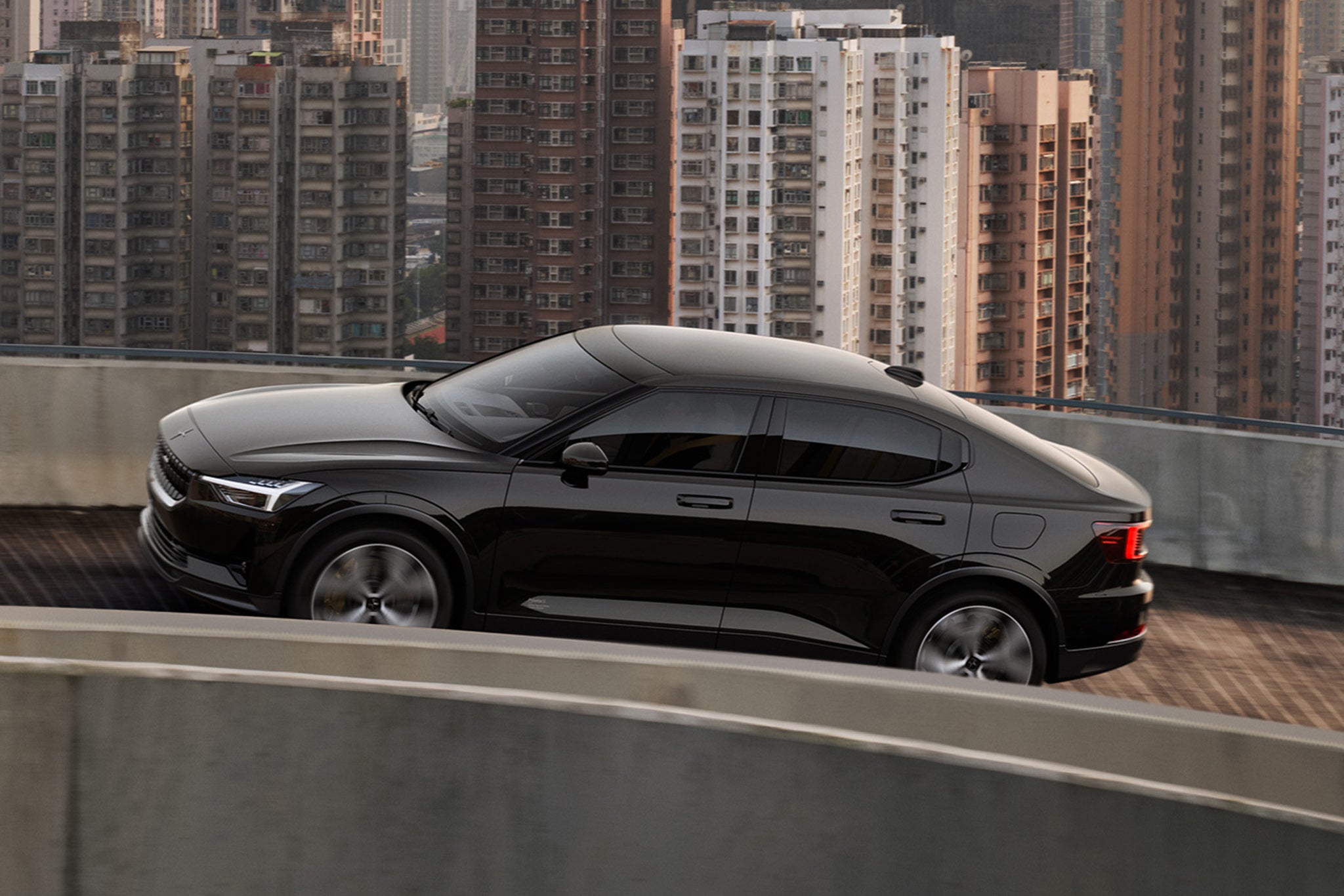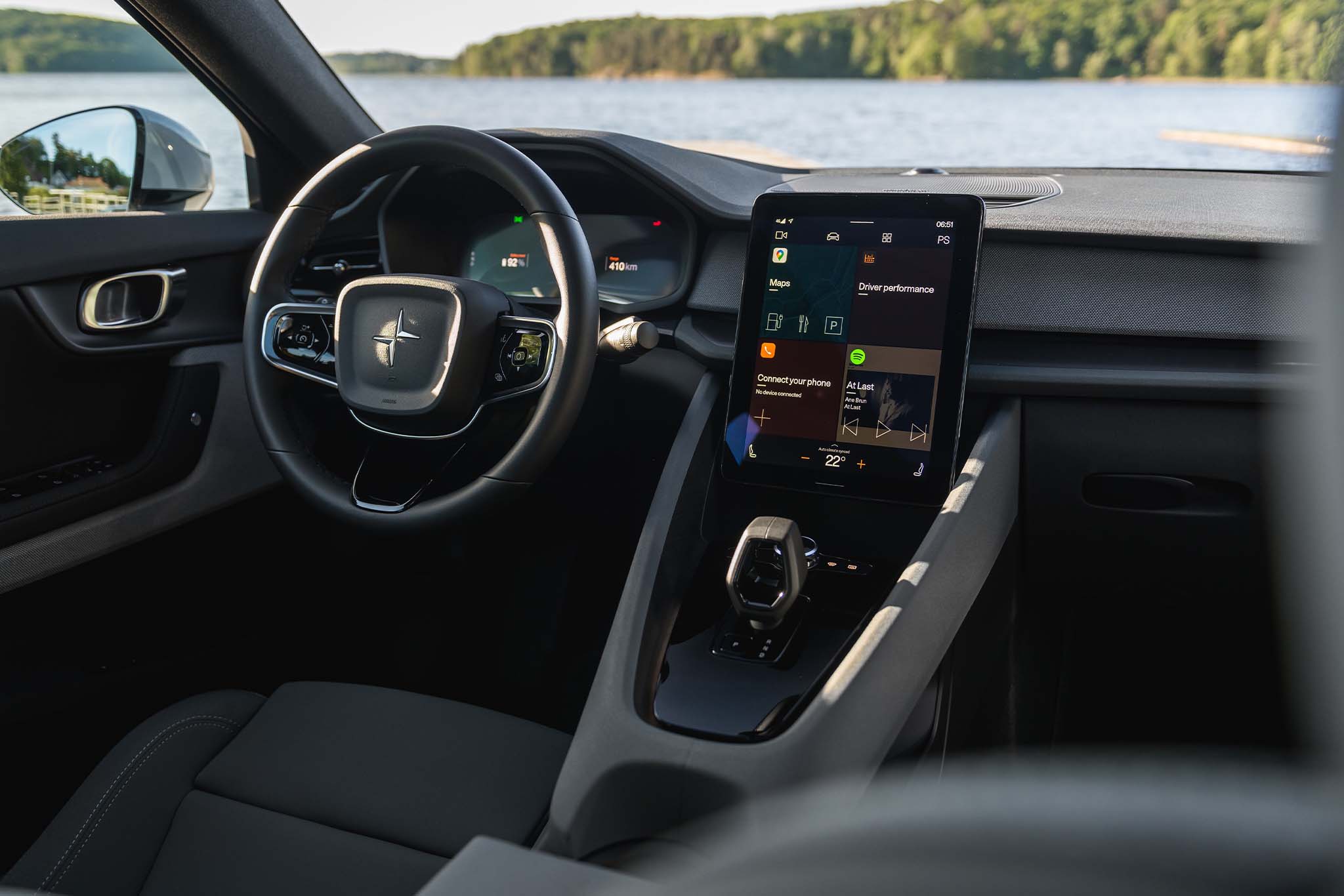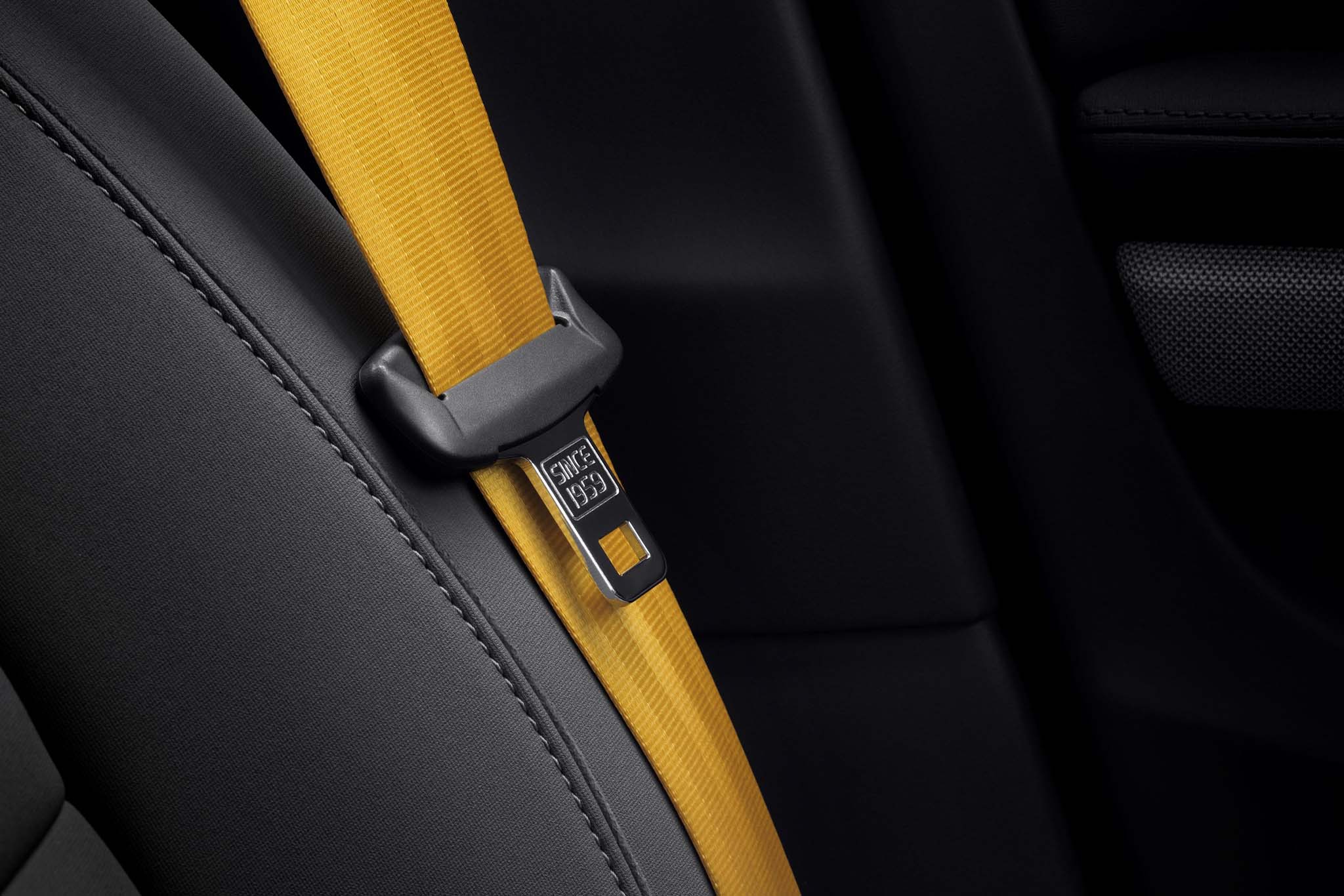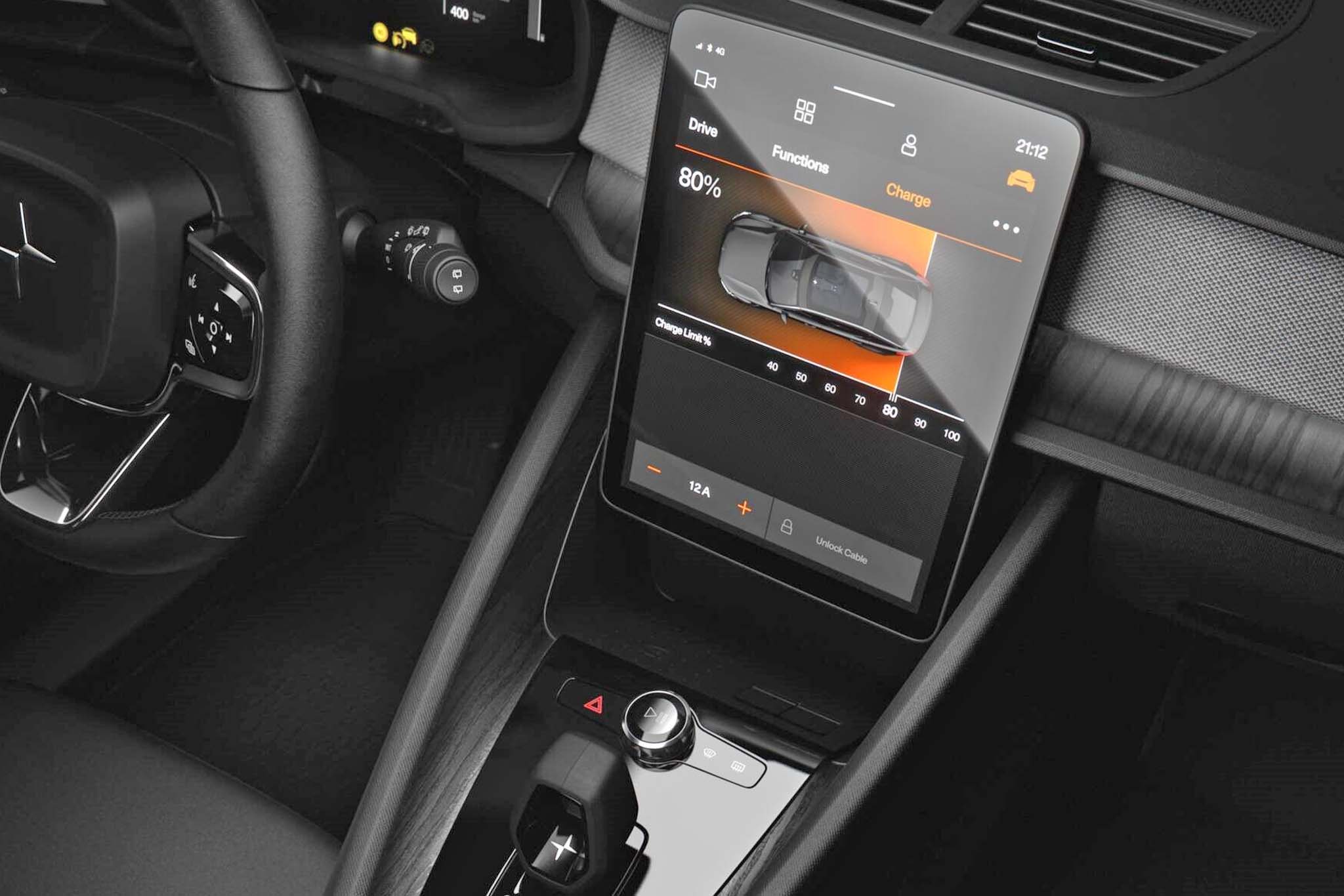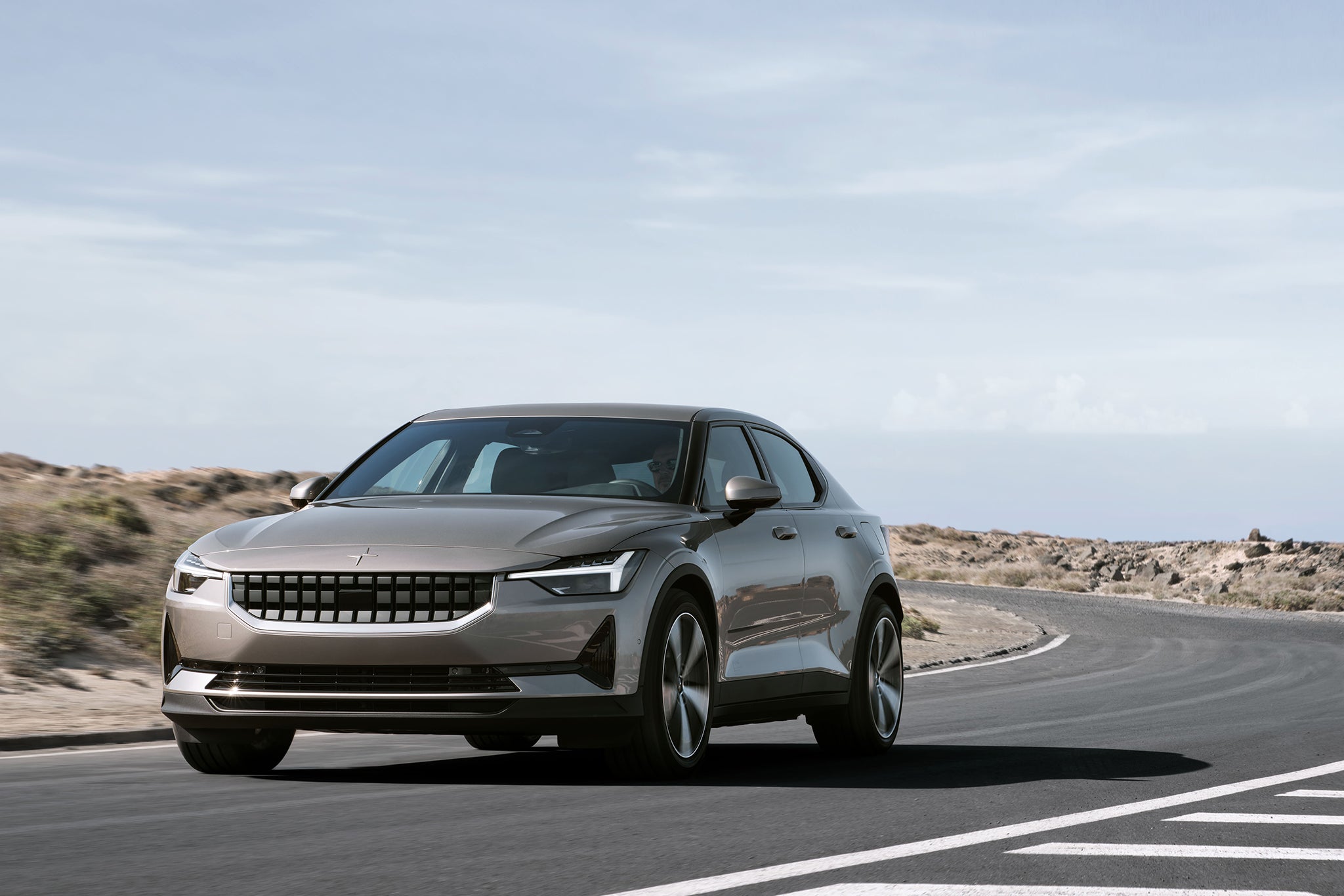The 2022 Polestar 2, in all its supposed sterility that's inherent to electric vehicles, is nice. That's not a backhanded compliment, nor is it a polite way of saying it's better than bad but not quite good. It's a unique enough car that others notice it without crowding you in every parking garage, and it's normal enough to enjoy like a trusted daily driver. This all became clear during my week with it in EV-friendly Los Angeles, which made testing a battery-powered car about as painless as a gas one.
I say that in large part because the infrastructure is there—or, at least, more so than it is anywhere else in the States. Given the ever-growing EV population in California, it'd be short-sighted to say there are plenty of chargers for everyone, but it certainly makes more sense to own a Polestar 2 on the Left Coast. With plugs at most major points of interest, the tester's 250 or so miles of range was fine—not near as worrisome as if I'd been back home in the fast-charging desert that is the Midwest.
It manages to do most every task without problem—and boy, is it quick—but it's important to know what you're getting at $58,400 out the door. With the test car being a dual-motor, long-range version, most of that cost is spoken for by the powertrain, meaning it's not as luxurious as you might expect at that price point. But that's more indicative of the budding EV market and the scratch it takes to build 'em in the first place, which I'll get to before long.
Seeing as the car has already been reviewed by both James Gilboy and Mike Spinelli, I thought I'd sum up my time with it with a rundown of things I did and didn't like about it.
1. Dual-Motor Acceleration That's Perfect for City Traffic: I'm convinced the Polestar 2 could pull on just about any gas car from 45 to 60 mph. Even north of that, it packs an acceleratory punch that's perfect for zooming in and out of traffic. With 408 horsepower and 487 pound-feet of torque available right now, it's an unsuspectingly zippy ride.
If you miss your exit in this car, it's your own dang fault. And it's still getting quicker!
2. Easy-to-Learn One-Pedal Driving: Going into this test, I had no experience with one-pedal driving. And even though I probably looked silly pulling out of the airport-adjacent parking lot, inadvertently stopping in the middle of the exit, I quickly picked up on the Polestar's system. It's especially user-friendly during highway driving—like other EVs, I imagine—and I could see the car's range estimator gain a mile here and there so it had to be working.
For anyone who hasn't driven an EV, I'll say this makes driving one genuinely fun. When regaining range turns into a game, it makes you more conscious and helps you adapt in a way that's not really a thing in traditional vehicles.
3. Nice Cabin Materials That Aren't Leather and Don't Try to Be: The tester had what Polestar calls the Plus interior pack, which means a 13-speaker Harman Kardon sound system, a dual-panel roof, wireless device charging, and WeaveTech seats. The last feature in that list is what earned my affection, mainly because they served as proof that car interiors can be nice without being wrapped in leather, or some material pretending to be leather.
I'm all for high-quality cloth that's durable, which seems to be the case with these WeaveTech thrones. Plus, if it helps keep costs down, that's even better.
4. All the Cameras That Made Parking in LA Easy: The test car also had the Pilot pack, which is Polestar's take on a driver-assistance suite. This includes adaptive cruise control, lane-centering, and sensors that'll tell you when a car's in your blind spot. While this is all helpful on the freeway, it also makes parking a whole lot easier with its 360-degree camera views.
Since I, uh, don't really have to parallel park where I live, I was a little rusty. The 2's selectable angles were there with the assist and not once did I bump into another car. Talk about a load lifted!
5. Surprisingly, the Styling: If you haven't seen one in person, you'd be forgiven for saying the Polestar 2 looks a little funky. That rear deck is admittedly super short, and the car looks small, mostly because it is. But I think black is a better color for it than white, like the first one we reviewed.
It doesn't look space-age and I'd hardly call it gimmicky; instead, it looks like a normal car that has clear Swedish design influences, even though it's built at Geely's Luqiao, China facility.
1. The Ride Isn't That Plush, Especially for Almost $60,000: As I mentioned already, the bulk of that $60,000 can be attributed to the Polestar 2's powertrain tech. It's stellar, don't get me wrong, but the sedan doesn't give you the same ride as other cars at that price point. Any non-AMG Mercedes-Benz C-Class could give you a better ride for the same money or even cheaper.
You feel the road, for sure, which is what you want when you're driving through the canyons; not so much on the pothole-ridden roads of LA County. No offense, California! It's just that getting jostled around by the suspension is even more tiring when the acceleration can leave you feeling unsettled, too.
2. As a Big Guy, the Fit Is Tight: There's no sense in knocking a compact for being small, but a Civic is roomier than this in the back. I spent a good amount of time behind the driver's seat to test this out, and had anyone taller than my pal and editor-in-chief Kyle Cheromcha been in front of me, it might not have been possible. At 6'5" and 280 pounds, I'm far from compact myself, but it's something to keep in mind.
I don't think you'd have trouble fitting a rear-facing child's seat back there, so that's a plus. Just don't expect to pile in your kids and their friends if they're too far past their eighth-grade promotion.
3. Google-Based Infotainment Is Fine... If You Don't Butt In: I've had good experiences with Google-based infotainment; take the 2022 Toyota Tundra, for example. The Polestar 2's display is crisp and so long as you're in, say, Google Maps, it's easy to operate. It's when you stray from there that things get confusing.
The way Polestar arranges the car's menus is less than intuitive, and I found myself struggling to switch between audio sources. All I wanted was to listen to my favorite Bluegrass playlist on Apple Music!
4. That Center Stack Has Storage, But It's Awkward: I've got a nasty habit of throwing whatever's in my pockets into my car's cubby hole that's underneath the radio and HVAC controls. That was an issue with the Polestar because it has strangely sized pockets that, while big enough for your phone, aren't well-suited for miscellaneous junk. They're just too narrow.
The left half of the compartment is meant for wireless phone charging, while the right half features two USB-C plugs. The problem is, those flaps block off all that space when the ports are in use, so you have even less room.
5. The Polestar 2, Like Other EVs, Is Priced This High Because It Has to Be: I look forward to when EVs like the Polestar 2 are priced competitively with, say, the Subaru WRX STI. It's hardly the same car but with AWD and enough performance to be considered a sporty sedan, it'd make the Polestar that much more attractive. You've gotta pick and choose what's most important on your list of automotive priorities, but a $40,000 EV with this much zip would be a hot item.
That's just not possible yet. Mass battery manufacturing should help drive down the price of building EVs like the Polestar 2, and as the cars we once loved as budget performers get increasingly expensive, the two categories could potentially meet in the middle. For now, though, there's no sense in comparing them.
Even with five things listed in each category here, I lean toward liking the Polestar 2. If it didn't have that dual-motor powertrain, or roughly 250 miles of range, or a nicely furnished interior, maybe I'd write it off as overpriced. But since it offers all of those things in a stylish package that's clearly different than what everyone else is driving, it gets a thumbs up from me.
This being Polestar's first dedicated EV—the 1 is a plug-in hybrid if you'll remember—I'd say it did A-OK. Of course, it helps to have the backing of a multi-billion-dollar OEM when building your first electric car, but there's always a way to botch things. I'm ready to see more like this out of Volvo and Polestar because if they can keep upping the quality and comfort, the ratings will only improve.
Got a question about the Polestar 2? Contact the author directly: [email protected]

